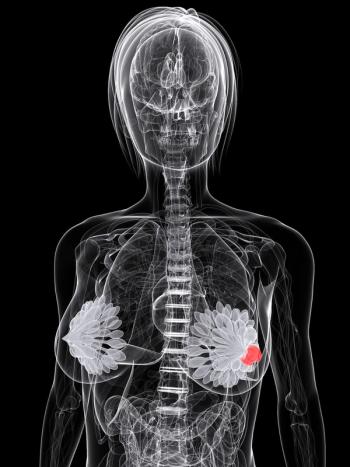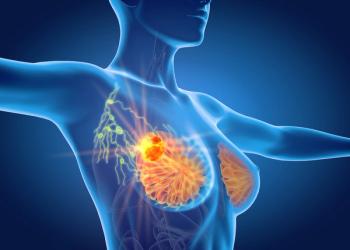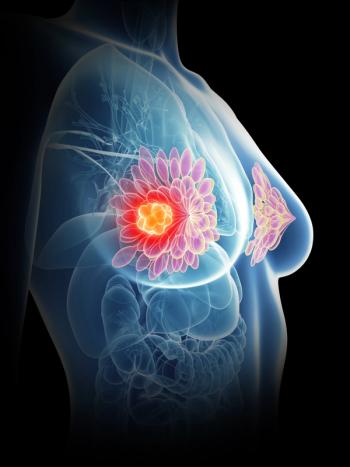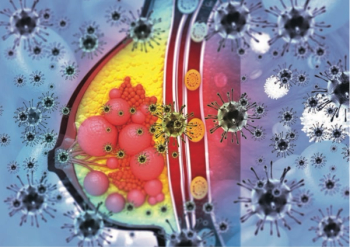
Oncology NEWS International
- Oncology NEWS International Vol 5 No 4
- Volume 5
- Issue 4
Dose-Dense Chemo Plus HER2 Antibodies May Have Role in Advanced Breast Cancer
PARIS--Although properly applied high-dose chemotherapy can produce massive cytoreduction in breast cancer, it may not be adequate to cure the disease. "The problem has never been the achievement of remissions with high-dose therapy; the problem is making them stick," Larry Norton, MD, of Memorial Sloan-Kettering Cancer Center, said at the Sixth International Congress on Anti-Cancer Treatment.
PARIS--Although properly applied high-dose chemotherapy can producemassive cytoreduction in breast cancer, it may not be adequateto cure the disease. "The problem has never been the achievementof remissions with high-dose therapy; the problem is making themstick," Larry Norton, MD, of Memorial Sloan-Kettering CancerCenter, said at the Sixth International Congress on Anti-CancerTreatment.
A more promising strategy for disease eradication, he said, maybe dose-dense sequential chemotherapy, possibly in conjunctionwith antibodies that target the growth factor receptor HER2.
Dr. Norton believes that cell kill is more rigorously accomplishedby administering chemotherapy more frequently than by simply increasingthe dose. The traditional simultaneous or alternating use of chemotherapeuticagents does not increase dose density, he said.
To maximize cell kill and avert regrowth, he advised oncologiststo give all of one agent first with very short intervals betweendoses, and then follow with a second and third agent.
"After many years, we evolved an outpatient adjuvant regimenthat is not as toxic as others and does not require stem cellsupport," Dr. Norton said. With this regimen, the use ofG-CSF is adequate to allow administration of doxorubicin every2 weeks (90 mg/m² for 3 doses), followed by biweekly paclitaxel(250 mg/m² for 3 doses), and, finally, biweekly cyclophosphamide(3 g/m² for 3 doses).
"This regimen has been piloted in over 100 women with stageII disease and four or more positive lymph nodes, and accomplishesa 90% disease-free survival rate at 2 years in patients with amedian of nine positive nodes," Dr. Norton said.
The American Intergroup is now planning a randomized study forwomen with four to nine positive nodes that will compare thisregimen with high-dose combination chemotherapy supported by bonemarrow transplant.
HER2 Studies
Dr. Norton also pointed to provocative new findings from MemorialSloan-Kettering suggesting that breast cancers positive for HER2may be more sensitive to chemotherapy with taxanes. In women withstage IV breast cancer who have visceral-dominant disease, haveundergone extensive prior chemotherapy, or have a low performancescore, HER2 positivity roughly doubles the likelihood of a responseto taxane therapy, he said.
In extensively pretreated women with stage IV disease, weeklyadministration of an antibody to HER2 yielded an objective responserate of 12%, with responses documented in the chest wall, liver,lymph nodes, and soft tissue sites. "We were particularlyencouraged by these results and also by animal experiments showingsynergy between the taxanes and anti-HER2 therapy," Dr. Nortonsaid.
Because of this synergy and the fact that HER2 positivity seemsto convey sensitivity to chemotherapy, Dr. Norton believes that"this approach, coupled with optimal dose-dense chemotherapy,may provide a way to get massive cytoreduc-tion and prevent tumorregrowth."
Articles in this issue
over 29 years ago
Antiangiogenesis Agents in Clinical Trials Worldwideover 29 years ago
Breast Cancer Stamp Debuts in Juneover 29 years ago
NCI, Department of Defense Sign Clinical Trials Agreementover 29 years ago
NCI to Fund More Extramural Investigationsover 29 years ago
Lymphoma, Leukemia Patients Sought for Trial of MoAbover 29 years ago
'Integrated Symposia' New Feature at ASCO Conferenceover 29 years ago
Obstacles That Slow Guidelines Implementationover 29 years ago
Lynch Receives Bristol-Myers Squibb AwardNewsletter
Stay up to date on recent advances in the multidisciplinary approach to cancer.

















































































